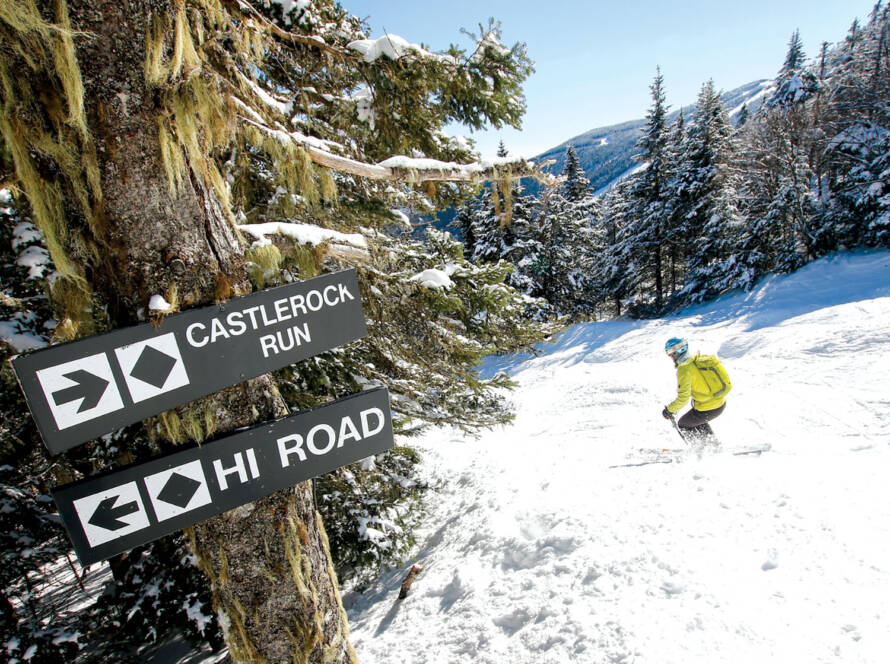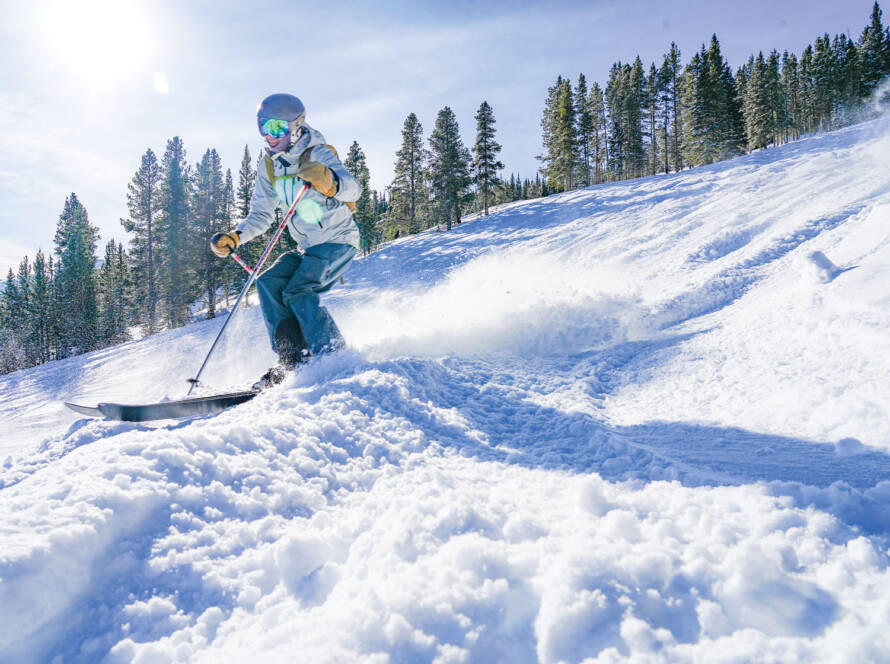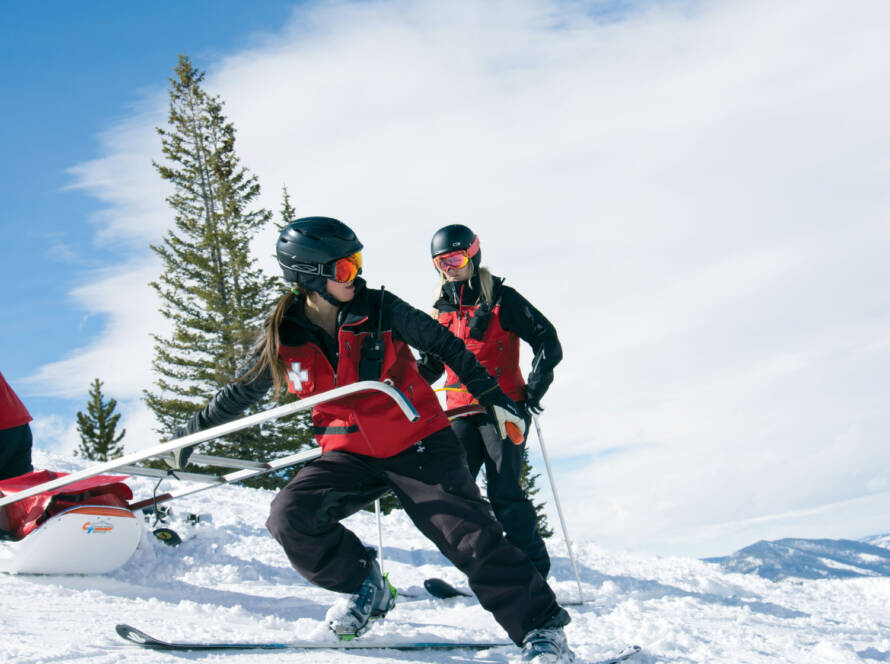It’s always a busy winter at the Buttermilk Ski Area, part of Colorado’s Aspen winter playground, along with its companion sites Aspen Highlands, Aspen Mountain and Snowmass. Following a decent and much-needed snowfall after a dry January, a February article in The Aspen Times reported the attendance on Sunday, February 11th “north of 18,000” for the entire Aspen-Snowmass area, essentially Christmas break numbers in the back half of the season.
Buttermilk was initially developed in the late 1950s and was part of the original Aspen scene. Today, it consists of three main parts; the challenging Tiehack, Main Buttermilk and West Buttermilk. But Buttermilk itself is a unique hybrid with options to attract beginners at one extreme and the Olympic- bound on the other.
It is both a well-known and lauded beginner area, which includes facilities like The Hideout, a ski school specialized for very young children. But Buttermilk has also been the site of the X-Games for the past 17 years, a notorious set of competitions that is most decidedly not for beginners. Names like Maddie Bowman, Shaun White and Chloe Kim, all Pyeongchang gold medalists, echo around the site.
“On pipes and parks, with the help of the X-Games, and the strong crew that we have internally represent arguably some of the best pipes and parks terrain in the country, if not the world,” said Travis Benson, Buttermilk’s director of trails. “And we have great beginner terrain to learn on as well as our intermediate to advance terrain….
“I’d say the one thing Buttermilk typically offers is a pretty big percentage of groom on the mountain. I mean, we’ll groom anywhere from 60 on a low-end average night to 80 percent of this mountain, if not approaching the 90 percent level. And the quality of grooming is definitely a point of emphasis for us, due to the fact that it is more beginner terrain, and trying to leave the perfect product that we can, as every groomer in the world does, there’s no question about that.”
And when those groomers work, they work late, of course. There are two shifts that hit the hill consecutively once the skiers depart for the day.
“The nature of any time you’re working with the snowmaking department or winter trails department, the lifts open at nine o’clock and run ’til 4-4:30 when we take back over,” said Benson. “We run two shifts; we run a swing shift and a graveyard shift. Even snowmaking is a two-shift situation. They’re a little bit longer shifts.”
“For winter trails, it’s a smaller [crew] – seven, plus a couple of guys from parks and pipes that float over a little bit. And then, snowmaking is a crew of 18 to 20. Then summer trails is a crew of anywhere from three to six, depending on projects going on.” (For equipment, the Buttermilk crew is “heavily, heavily Prinorth,” with TechnoAlpin for the snowmaking side, says Benson.)
One of the staples of the season is the aforementioned X-Games in late January/early February. While a team comes in from outside to build up the area, Benson says the groups all work well together. (Buttermilk was also the site of the Red Bull Double Pipe back in 2015.)
“We’ve been doing it so long as a partnership with not only the XGames, but ESPN. It’s been a strong partnership over the years. It pretty much does run pretty seamlessly, even in a year like this when we face temperature challenges and weather challenges. Execution was flawless on both sides, in my opinion. Our main role, my main role, the department I oversee, is providing the snow for the courses, and also there’s some side roles as far as helping move snow in some critical areas.
“Putting the mountain back together for the following weekend falls on us, for the most part, and getting it back to a ski hill after a large event like that.”
Though the Olympics are quadrennial, Benson says the X-Games – locally, anyway – tend to overshadow it, even in an Olympic year. The Aspen Daily News estimated a crowd of 115,000 showed up for the competition’s four days this past January. But the hype of Korea this winter hasn’t changed things at Buttermilk, says Benson.
“Any time there’s Olympics and you work in the ski industry, there’s a different feeling to it, but the X-Games are such a stand-up product and such a premiere product and showcase of talent that the X-Games is such a very, very, very elite event.”
Benson is a native Coloradan whose family moved to Aspen when he was in the third grade, where he’s now raising his own family. He’s known for having changed direction from a career in finance to work at Buttermilk. But for an Aspenite, there’s an added angle to all the competition. “One thing I would say is that growing up in Aspen, it’s always fun to see local athletes competing,” he said. “This year we got to see a good handful of that, [ones] who are also going on to the Olympics.”
Of course, a director of trails would not be worth his weight if he didn’t sample his own product.
“I tend to go up at least four times a week. That’s the goal, if not more. It just depends on the time of year and the workload overall. But I think it’s very important not only in my role, but you have to have your eyes on the ground and see exactly what product we’re offering the guests and it’s hard to see that if you’re not actually getting the skis on that surface.”
The Buttermilk season ends in early April but, of course, the work doesn’t end with winter. Maintaining Buttermilk is a year-long operation and summer work can be as serious as the winter.
“Summer is fully upkeep,” said Benson. “The goal of the summer is to be able to come into a new winter with the mountain fully functional the first day we come back for snowmaking. And, you know, we hit our opening days. We do a lot of trail maintenance; we actually mow 99 percent of our skiable terrain. And, by doing so, and that’s actually kind of a huge part, we mow everything down to about four inches. We try to mow it late in the year so we’re spreading the natural seed, the natural wildflower seeds with it. But by mowing it down to four inches, it’s amazing how little snow it takes to open this mountain compared to if you had grass bushes standing 18 inches tall.
“And a lot of that is due to the summer trails work – not just mowing, but clearing rock. We pick rock all summer and just making sure the trail is truly clean. And we’re pretty fortunate because Buttermilk, compared to a lot more conventional ski areas, looks a lot more like a meadow than it does a big rocky, steep face. It’s a lot more forgiving in that nature.”
At the end of the season, Benson and his team doesn’t bask in Buttermilk’s successes, he says; rather, his job is about meeting the challenges head-on.
“I think a lot of it is taking every day as it comes. I mean, for me the challenges are a changing climate and changing snow packs, and dealing with that, whether you face those challenges early in the year like we did this year or you face those challenges in the spring, as we’ve seen in a couple of years. It’s a challenge at the time, but it’s rewarding at the end if you make it happen and still offer a great product for the guest.”


